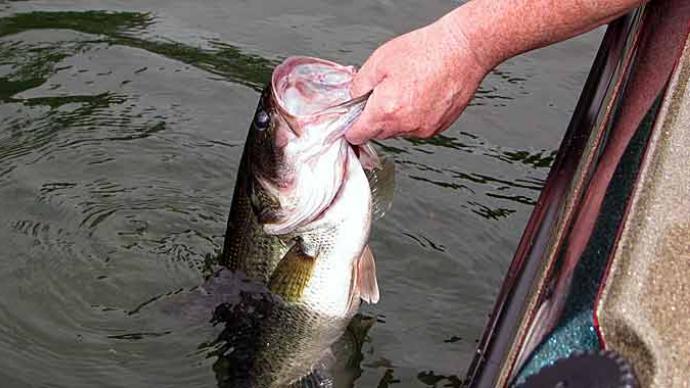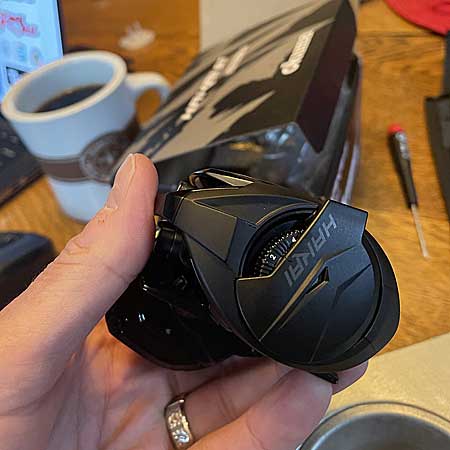
It’s pretty much winter here in Western NY, so when I received the new Okuma Hakai HD reel to test, there wasn’t much I could test other than casting in the yard, so I decided to make a teardown and document it with pictures. I’ll start with the basic specs:
- Bearings: 6+1
- Capacity: 90 yards 50 lb. braid
- Ratio/IPT: 7.3:1/29.9”
- Weight 5.9 ounces
- Max Drag: 20 lbs.
- MSRP: $169.99
This reel represents their general-purpose, cover-most-bases offered in the product line. It features a magnesium frame, a swept handle with round EVA knobs, and a very light spool (0.33 ounce) with a single ball bearing at each end. The reel has a minimal form factor and palms nicely when paired with a modern rod. The matte black finish with gloss highlights will look good with just about any rod – a classic look like a black tux.
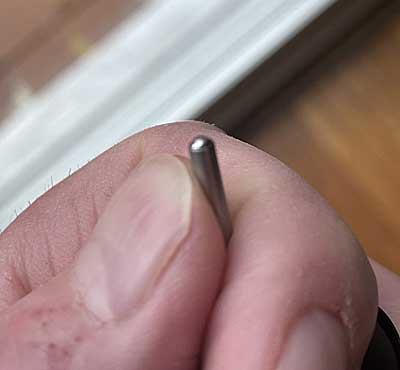
I had some trouble getting into the reel right out of the gate. That is until I opened the instruction manual to find out how to access the spool. It’s a cleaner mechanism than removing the entire side plate. It is somewhat reminiscent of reels from a couple of decades ago. You must rotate the spool cover (as shown) to remove it, and then the spool comes right out.
Here is the part I wanted to get a good look at FLITE-SHAFT. It has a single, precision ball bearing pressed into each end of the spool rather than a polished tip. I was able to pitch 1/8-ounce fairly well using 10 lb. Tatsu Fluorocarbon line. This should aid in casting light lures on the finesse models. I wouldn’t call this reel BFS, but you can get by just fine, and at that price point, the performance is on par or better than many big-name reels.
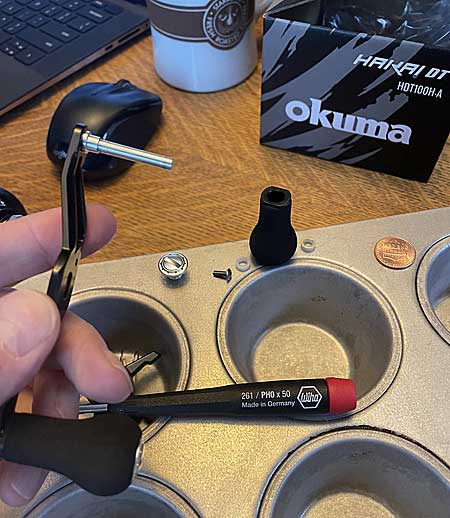
The handle is a typical swept design with round knobs supported by nylon bushings. Some may prefer a bearing here, but I prefer the smoothness of the bushing. I don’t like the knobs to spin freely when touching them. This setup is smooth, reliable, and maintenance-free. The smaller round knobs are a nice touch.
Speaking of nice touches, this reel features a crank stack screw with a 10mm nut head to hold the handle and drag the star to the crank stack. This was a big surprise. I don’t think I recall ever seeing this before on a design with a floating star drag. Anyone who tried holding a spring-loaded drag and handle with all the washers in between while trying to thread a brass 10mm nut onto the crankshaft will appreciate this.
Once that is all off, I had to find all the crank side cover screws – there are five of them! Check the parts diagram because some are hidden. This aspect reminds me of some very high-end baitcasters from another well-supported brand. When removed, you can see the typical baitcaster internals here. It features a huge brass main gear, a hollow hardened aluminum crankshaft, and a unique drag stack employing carbon fiber and steel washers.
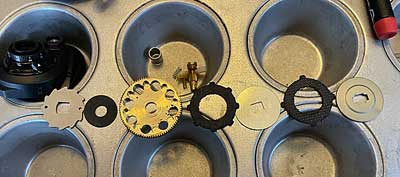
This reel is rated for 20 lbs. of max drag. The larger carbon fiber washers are dog-eared to stay in place with the main gear. The metal washers are more typical and keyed to rotate with the crankshaft. I feel that the dog ears on the carbon fiber washers contribute to the higher drag rating since they aren’t just free-floating in the stack like most other systems.

Next is something I don’t care for, and that is the thumb bar is only attached to the spool release via a tiny, coarse threaded screw. First, they are difficult to remove and replace, as shown below. Second, I feel like this could be prone to breakage or stripping. I prefer a design where the metal shaft goes through the thumb bar.
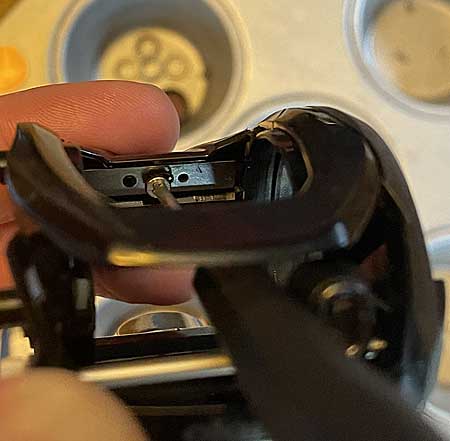
The crankshaft and worm gear are assembled as an “all in one” unit, which is unique. A bearing supports the worm drive under the idler gear. This would keep any stress of that gear when there is any torque on the line guide when fishing a fish. This isn’t something I expect in a reel at this price point. A steel bearing also supports the crankshaft in the reel frame.
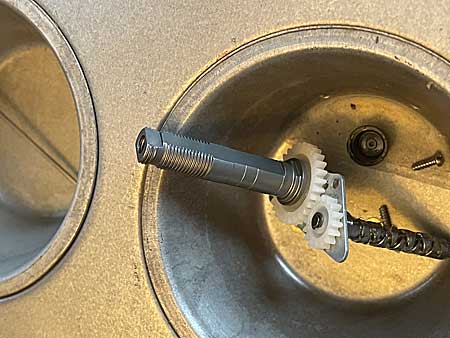
All in all, I am impressed with this reel. There are several innovative features at a price point that many count on day in and day out. Several of these features are only found in reels that are much more expensive.
If you are interested in the tools to do this, here’s what I used:
- Husky 10mm nut driver
- Wiha 1/8” mini screwdriver
- Wiha 0 Philips head mini driver
- Wiha 00 Philips head mini driver
- Staples T-pin
- Penny
- A muffin pan
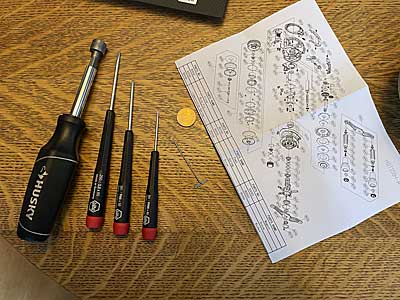
Have a parts diagram in front of you, and take pictures along the way. Good luck and happy fishing!


